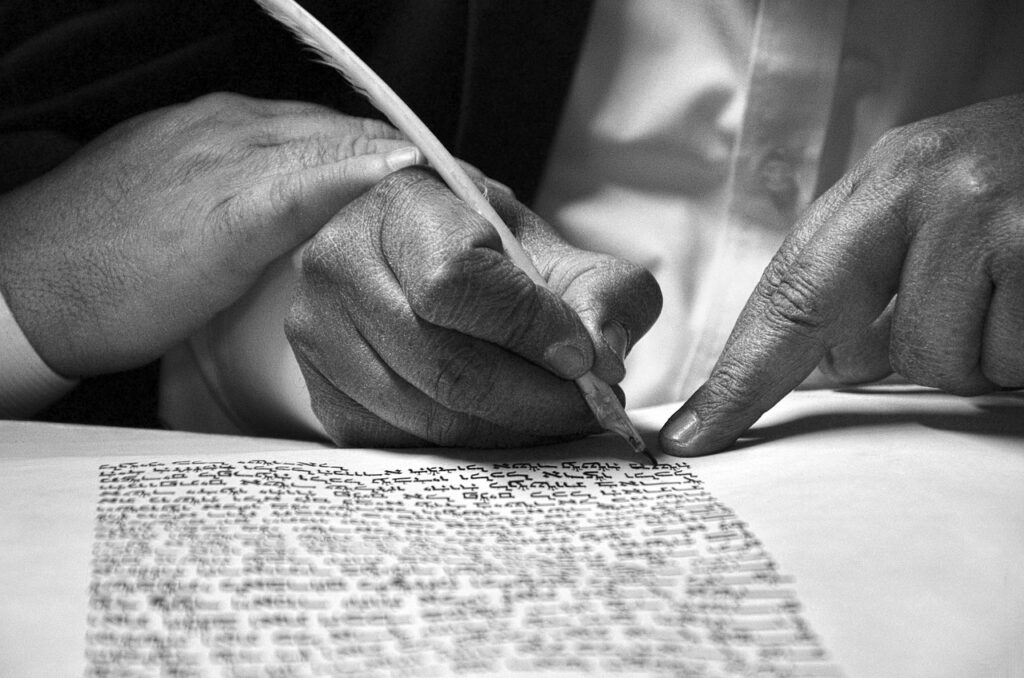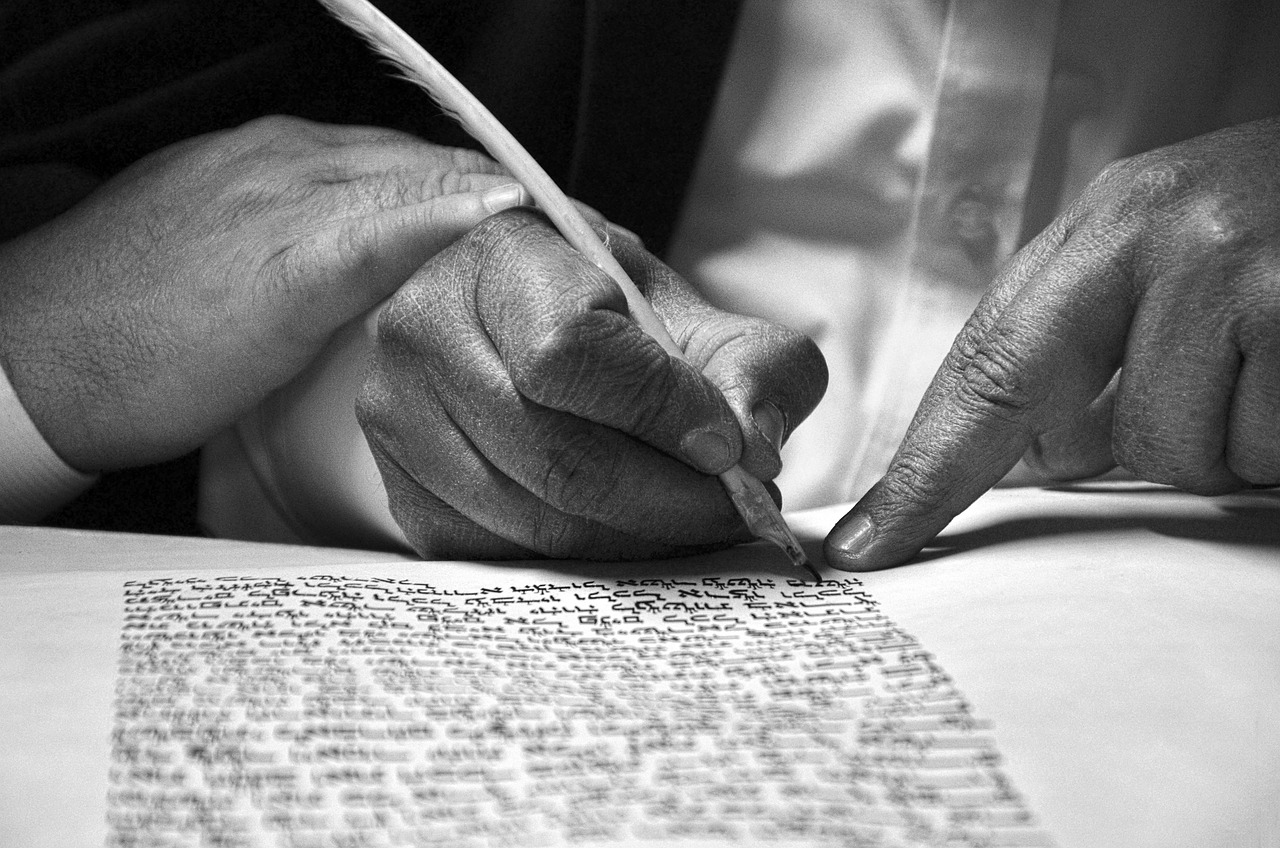Are you looking for a way to add a personal touch to your projects or correspondence? Look no further than calligraphy and hand lettering.
These artistic practices have been around for centuries and continue to evolve with modern techniques and styles. With the right tools and techniques, you can create beautiful, customized lettering to enhance any project.
The art of calligraphy and hand lettering is more than just writing words beautifully. It is a way to express yourself and add a unique flair to any piece of work. From wedding invitations to signs to personal journals, calligraphy and hand lettering can elevate the simplest of projects to a work of art.
In this article, we will explore the history and evolution of these practices, the essential tools and materials you need to get started, basic techniques, advanced styles, and tips for incorporating calligraphy and hand lettering into your projects.
So grab a pen and paper and let’s get started!
The History and Evolution of Calligraphy and Hand Lettering
You’re probably wondering how calligraphy and hand lettering came to be what they are today – well, let me tell you, it’s quite the fascinating journey!
Calligraphy can be traced back to ancient China, where it was used for important documents and religious texts. The art then spread to other parts of Asia, including Japan and Korea, where it developed its own unique styles and techniques.
In the Western world, calligraphy became popular during the medieval period, where it was used for illuminated manuscripts and religious texts. It also had a significant influence on the development of typography and printing.
Hand lettering, on the other hand, has a more recent history and is often associated with graphic design and advertising.
Despite their different origins and influences, both calligraphy and hand lettering have a rich cultural significance and continue to be celebrated as important forms of artistic expression.
Essential Tools and Materials for Calligraphy and Hand Lettering
To achieve the desired effect, it’s crucial to have the essential tools and materials when diving into the world of elegant writing.
Brush pens, nibs, and ink are the most commonly used tools for calligraphy and hand lettering. Brush pens are perfect for beginners due to their flexibility, ease of use, and portability. They come in a variety of colors and sizes, making them ideal for creating intricate designs and lettering.
On the other hand, nibs and ink offer more control and precision, making them a favorite among professionals. When choosing nibs, it’s important to consider the size, shape, and flexibility.
Proper care and maintenance are essential to prolong the life of your calligraphy and hand lettering tools. Always clean your nibs and pens after use, and store them in a dry and cool place to prevent rusting or damage.
With the right tools and upkeep, you can create stunning calligraphy and hand lettering that will impress anyone.
Basic Techniques for Calligraphy and Hand Lettering
Get ready to elevate your writing skills with these simple techniques for creating elegant and beautiful designs. Calligraphy and hand lettering are all about precision and control, and the right technique can make all the difference in the final product.
One of the most important things you can do to improve your skills is to practice regularly. There are a variety of practice exercises you can do to improve your technique. One common exercise is to practice basic strokes such as the upstroke and downstroke. Another is to practice writing out the alphabet in different styles and sizes.
It’s also important to take note of common mistakes, such as using too much pressure or not holding the pen at the correct angle. By identifying and correcting these mistakes, you can drastically improve the quality of your work.
Advanced Styles and Variations for Calligraphy and Hand Lettering
Immerse yourself in the world of elegant and intricate writing by exploring advanced styles and variations that’ll take your craft to the next level.
One way to elevate your calligraphy and hand lettering is by incorporating color. Play around with different color combinations and see how different hues can bring your letters to life. You can also experiment with using metallic or glitter pens to add some extra sparkle and shine to your writing.
In addition to incorporating color, you can try incorporating different writing styles into your calligraphy and hand lettering. For example, try combining a modern calligraphy style with a traditional serif font to create a unique and visually interesting composition. Don’t be afraid to mix and match different styles and techniques to create something completely new and original.
Remember, the beauty of calligraphy and hand lettering lies in the endless possibilities for creativity and self-expression.

Tips for Incorporating Calligraphy and Hand Lettering into Your Projects
You can elevate the impact of your projects by seamlessly integrating the elegance and intricacy of handwriting. Calligraphy and hand lettering aren’t just beautiful, but they also add a personal touch to any project.
There are plenty of creative applications for calligraphy and hand lettering, such as wedding invitations, greeting cards, and even logos. By incorporating hand-lettered elements, you can make your project stand out and leave a lasting impression on your audience.
Personalization is another great way to use calligraphy and hand lettering in your projects. Customizing your designs with names, dates, or even quotes can make your work feel more special and unique. Whether you’re designing a gift for a loved one or creating branding for a business, incorporating personalized calligraphy and hand lettering can make your project feel more intimate and thoughtful.
With the right techniques and practice, you can take your projects to the next level with the art of calligraphy and hand lettering.
Frequently Asked Questions
How can I use calligraphy and hand lettering to create a unique wedding invitation?
You can add a personal touch to your wedding invitations by using calligraphy in DIY projects. Use your own handwriting or hire a calligrapher to create unique designs. Incorporate personal details such as photos or special quotes to make them truly one-of-a-kind.
What are some common mistakes beginners make in calligraphy and hand lettering?
Common mistakes for beginners in calligraphy and hand lettering include using the wrong tools, applying too much pressure, and not practicing enough. To improve, start with quality materials, practice consistently, and seek guidance from experienced calligraphers.
How has technology impacted the traditional art of calligraphy and hand lettering?
Digital tools have revolutionized calligraphy and hand lettering, making it easier to create and share designs. However, traditional techniques still hold value in preserving the authenticity and beauty of the art form.
Are there any cultural or historical significance to specific calligraphy styles or techniques?
Did you know that calligraphy styles and techniques have historical significance and cultural influence? For example, Chinese calligraphy has been used for communication and art for over 4,000 years, while Islamic calligraphy is considered a sacred art form.
Can calligraphy and hand lettering be used for more than just decorative purposes, such as in professional settings?
You can use calligraphy and hand lettering in professional settings for practical purposes. For example, you can use calligraphy to create beautiful invitations or to design logos. Hand lettering can also be used for signage and packaging.
Conclusion
Now that you’ve learned about the history, essential tools and materials, basic techniques, advanced styles, and variations, and tips for incorporating calligraphy and hand lettering into your projects, it’s time to put your skills to use!
Practice makes perfect, so keep practicing to improve your skills and develop your own unique style. Don’t be afraid to experiment with different materials, techniques, and styles to find what works best for you.
Remember, calligraphy and hand lettering are not just about creating beautiful letters and words. They’re also about expressing your creativity and personality. So have fun and let your imagination run wild as you create stunning works of art with calligraphy and hand lettering.
Happy lettering!






